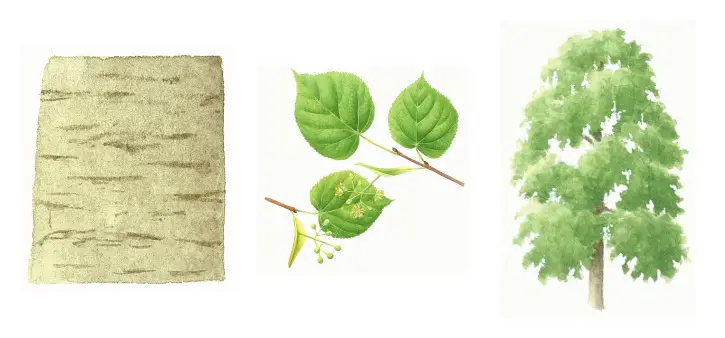Small-leaved lime
Small-leaved lime

Despite its name, the small-leaved lime has no relation to the citrus fruit. It’s one of two lime species found in Britain, but is relatively rare to find in Scotland. Its botanical name is Tilia cordata.
Since ancient times, the lime tree has been used for shade and lowland shelterbelts. It was also planted along village streets as a holy tree to protect against evil spirits.
Facts and stats
- Uses: Its pale cream coloured wood is fine textured and resistant to splitting, making it ideal for turning and carving, as can be seen in the works of Dutch-British sculptor and wood carver, Grinling Gibbons.
As it does not warp, lime wood is also used for the keys and sounding boards of pianos. - Fruit: Unlike other limes, the fruits are neither ribbed nor hairy.
- Bark: It has smooth, grey bark which cracks with age.
- Flowers: The sweet smelling flowers attract bees, other insects and birds including woodpeckers.
- Height: The small-leaved lime has downward arching branches and grows to 35 metres tall.
- Supporting insect species: 57
- Lifespan: 400 years
- Natural range: northern Spain to Caucasus and Siberia